Boston is a transient city. Each fall, legions of artists enroll in graduate programs throughout the city to nurture their talents and connections, and approximately two years later, many move on. While they are here, some of these artists are presented via exhibition or editorial to the city, and many inform and evolve the Boston art community. So why do so many leave? And how does the city affect their practice? In Elsewhere, we seek to reconnect with some of these former Boston artists, to discuss their reasons for leaving, and to see how their work subsequently progressed.
We've had a lot of feedback on Elsewhere since our first two installments. Some have told us that they love the series, and it's an important conversation to have; others have said they disagree with how we've framed the conversation, or that it's downright depressing. Why focus on artists who have left Boston when there are so many still here, living and making work despite the city's challenges? This installment, with artist, writer, and curator Caitie Moore, highlights the strengths and challenges that Boston offers young artists—a supportive, DIY community working to overcome the problem of space in the city. Caitie, who exhibited work in spaces like Fenway's Fourth Wall Project and Cambridge's Blanc Gallery, discusses Boston's dearth of affordable spaces and the work that many are doing to fill those gaps. We also talk about how Caitie got to Boston, and what's she's been up to since leaving for Cleveland. While Caitie has moved on, her thoughts on how Boston sustained her practice while she was here are reminders of what the city can offer those of us who stay.
When did you move to Boston and why? Please describe the arts community you found in Boston or the New England area.
I moved to Boston in the summer of 2012 from Savannah, Georgia. I had finished my BFA in photography at the Savannah College of Art and Design in 2011 and spent the following year creating the would-be photography publication and blog Aint-Bad Magazine with some college friends. I became increasingly more interested in having a curatorial and editorial role in the making of our publication and sought to work with a real publisher. Subsequently a friend told me about an opportunity to intern with Art New England Magazine (ANE) so I moved to Boston.
I was pretty enthusiastic about the Boston art scene. Compared to Savannah it was robust and the art seemed fresh and experimental. I remember my first SOWA Friday, walking past Anthony Greaney's and catching “It Might Get Better” performed by Hayley Morgenstern and Creighton Baxter. I vividly remember the reaction of the audience—mostly terrified haha, but frozen and captured with intrigue. There was something about that performance and the reaction that excited and invigorated me.

That being said, I was surprised to learn about frustrations within the artistic community. I mean, this is an art scene caught in the midst of a hyper inflated real estate market, feeling trapped by the traditional, safe, artwork propagated by the institutions, not to mention its awkward proximity to New York City. I attended two lectures, ironically bookending my experience in Boston, that addressed the same struggles without much progress. Despite these challenges I was incredibly inspired by the resilience and DIY nature of the arts community. I really admire the tenacity of Boston artists and the smaller galleries that fight for emerging, non-traditional art.
Will you talk about the work you were making before arriving in Boston? Did your work change after you moved here?
My work changed quite significantly in a number of ways. My personal photography has evolved slowly since college. I have moved towards digital color, whereas before I was shooting primarily medium format black and white. I really enjoy shooting analog, but with a lack of significant resources after college I gravitated to a less rigorous process. To be quite honest I’ve been shooting primarily with my iPhone over the past two years. I enjoy printing small so the limitations of the image size aren’t much of an issue for me.
Over the years, I have placed less of an importance on my personal work and have turned my focus more to the work of others. This started while I was still living in Savannah but progressed after my move to Boston as I had the opportunity to work closely with a variety of new and talented artists. I was also writing a lot more thanks to my experiences with Aint-Bad Magazine and Art New England.
Despite not attending any of the institutions, Boston posed a good learning experience for me and my practice. I definitely grew as an artist and professional through living in the city. A real benefit, I think, to living in Boston is being able to enjoy the vast resources available to the public through the Museum of Fine Arts, MIT, BU, Harvard, MassArt, Tufts... etc etc. I ended up participating in some type of art-related event, lecture, exhibition, open studio at least once every week. Those experiences have certainly changed me and my work.
Did you feel supported by the local gallery scene? Why or why not?
I do feel like I was supported by the gallery scene. I was very lucky to have known and met some well-connected people in Boston from the get-go. Greer Muldowney and Judith Tolnick Champa were absolutely instrumental to my success. I cannot thank them enough for their knowledge and support.
I feel that Boston gallerists are generally accessible and open to a dialog. The scene isn’t as elitist as in a place like New York, where you would never consider walking up to the Gallery Director and introducing yourself. For this reason I believe there’s still hope! Perhaps the attitude is a result of Boston’s challenging dynamics, however, it was my experience that if you have an idea, there is likely someone interested in helping you find a way to make it work. Now, those people aren’t always immediately obvious and there’s definitely a lot of hard work that goes into finding the right connections, but Boston is seething with folks dedicated to the prosperity and stability of a contemporary art scene. I am super thankful for everyone who trusted me and humored my projects.

Much of your work is focused on creating opportunities for emerging artists, be those opportunities publications, exhibitions, or events. Can you name one way in which you think Boston supports emerging artists and one way the city could improve on its support?
I’ve been spending a lot of time thinking about this. For one, I think the Massachusetts Cultural Council is doing a great job supporting artists and arts organizations, however, I would honestly say the strongest force for emerging art comes from the artists and advocates who live in the city. The same folks who saw the lack of city support and have actively fought to carve out space for others. I’m sure I’ve forgotten a bunch of people, but I think the following have done a significant job to support the scene: Maggie Cavallo, Anthony Greaney, Liz Devlin, Sandrine Schaefer, Liz Munsell, Pat Falco... spaces like Lincoln Arts Project, The Distillery, Samsøn Projects, New Art Center, Mobius, CasaBlanc, kijidome, sweety's, Aviary, Hallway Gallery, Lot F, and Howard Art Project.
My move to Cleveland has been interesting in a number of ways, one of them being that the city is the complete opposite of Boston. Being an underdog city in a lot of ways, Cleveland has cultivated a really strong sense of community. Cleveland LOVES Cleveland. Hoards of people attend the art walk events, flea markets, fairs etc. and purchase local art and support local artisans. In 2015 the county voted to continue a decade long 30-cent-a-pack tax on cigarettes that supports culture in Cuyahoga County. From 2007 - 2015 nearly $136 million went to artist grants and cultural programming.[1] This number becomes more staggering when you realize that Cuyahoga Country only has a population of approximately 1.3 million.[2]
I left Boston right before the city gained an Arts Commissioner, so I can’t really speak to how the city has changed since, but looking at real estate, one of the city’s largest challenges, it could improve by paving the way for low-interest loans for small businesses and granting storefronts for cultural purposes. Galleries would be able to take more risks and produce more dynamic and “edgy” exhibitions if they didn’t have to concern themselves so much with space rental. One great thing The Detroit Shoreway, here in Cleveland, has done to promote new businesses and utilize old and abandoned storefronts, is to create a Small Business Competition which allots winners a “pop-up” space, with free rent for 3/6/12 months. In addition, winners are eligible to receive upfront loan money (up to $5000) to help build out their spaces.[3]
Lastly, I think there should be more city support for community maker-spaces such as Danger Awesome! and Artisan's Asylum Inc. The Downtown Cleveland Public Library has a free maker-space, open and available to anyone who wants to learn how to use equipment like the laser cutters and digital 3-d printers. They provide computers with Adobe products on them and encourage creative literacy for the general population. Art shouldn’t just be for those who can afford it.
When did you leave Boston and why?
I left Boston in October 2014 for a job in Cleveland with the Society for Photographic Education. I had worked with them on-site since 2011 for their annual National Conference and was asked to fill-in for their Conference Planner while she was on maternity leave. It seemed like a really fun and challenging opportunity—having no prior experience planning any sort of an event, beyond a gallery exhibition, let alone a conference for 1600 people. I am incredibly thankful for SPE’s then-Executive Director, Virginia Morrison, for having the vision and faith in me to step up to the task. The job was also sold with the possibility of rolling into a full-time position that would entail coordinating new initiatives, including gallery and local programming. So naturally, that was a draw.
I remember speaking with Virginia on the phone and her first question was “So... how do you feel about Cleveland?” Despite growing up in Pittsburgh, I really had no feelings for Cleveland. “It seems... cool?” I was between jobs at the time and really had no excuse to stay in Boston. It had been about six years since I left the Midwest and sort of felt like it was time to find my way back. It’s been a real treat to get to know the Midwest again. There’s some really exciting energy coming out of the Rust Belt right now.
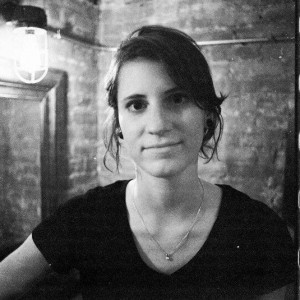
How has your work evolved since leaving Boston? What are you working on now?
Since moving, I have continued to run Nomadic Bookshelf and have been able to expand the business in exciting ways. Cleveland is different from Boston for obvious reasons... space is abundant. Businesses are less reliant on sales since rent is so cheap—you find a lot of small independently owned shops. I’ve buddied with a couple local stores to let me have what I like to call “residencies” in their storefronts. Having the books available throughout the week has given me the flexibility to think towards the future and not put such an emphasis on traveling... which can be incredibly expensive! I’m currently working to put together my spring calendar and figure out which festivals I will be participating in this year. In the long run I’ve started to think towards having my own space that would allow for more projects and educational programming.
I’m also currently working on making stronger connections and more fulfilling relationships with folks in the art scene. The community here is pretty small and I’d love to get my hands on some collaborative projects within the city’s established institutions.
- Caitie Moore.
- From Nomadic Bookshelf.
- Installation of Flash of an instant, curated by Caitie Moore and Sarah Pollman, New Art Center.
- From Creighton Baxter and Hayley Morgenstern’s It Might Get Better
Caitie Moore is an Artist and Independent Curator from Pittsburgh Pennsylvania. She graduated with a B.F.A. from the Savannah College of Art and Design in 2011 and has since been dedicated to creating opportunities for emerging artists. She is the owner of Nomadic Bookshelf, a small nomadic photo bookstore specializing in artist made and produced photobooks. She is a founding member and the former director of Aint-Bad Magazine, an international print and web-based platform dedicated to emerging photographers. In 2014 she was awarded the Young Curatorial Grant from the New Art Center in Newton MA and has curated numerous exhibitions featuring national and internationally acclaimed artists.
[1] http://www.cleveland.com/arts/index.ssf/2015/10/cigarette_tax_helps_arts_achie.html
[2] https://en.wikipedia.org/wiki/Cuyahoga_County,_Ohio
[3] http://dscdo.org/media/documents/biz_plan_competition_guidelines_final_4_11_12.pdf

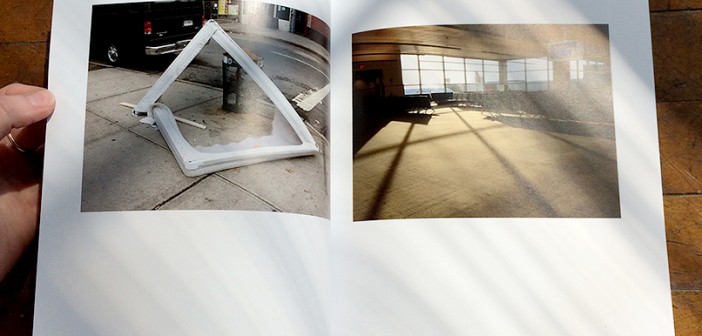
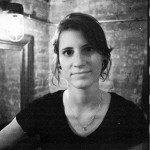


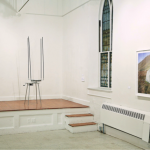
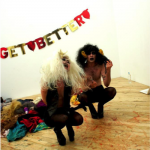
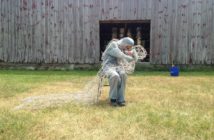
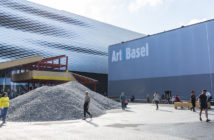
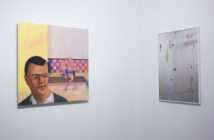
1 Comment
Well-spoken and powerful, Caitie!